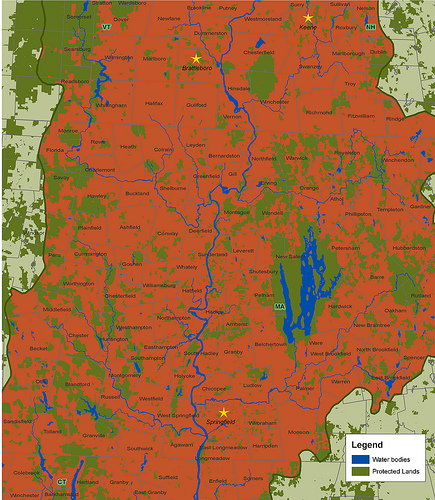Voters at Dummerston town meeting March 3 decided to put $10,000 into the town's farmland protection fund. About 200 people were at the meeting. The money can be used to buy land, or to buy development rights.
"This will help the town get money from other sources like the Vermont Land Trust," resident Bill Schmidt said during debate about the measure at the meeting.
The number of houses in Dummerston more than doubled between 1960 and 2000. Very few of the new houses were built close to other houses. Almost all of them were single family houses, not the kind of multi-family housing found in downtown Brattleboro and Putney.
Dummerston's large expanses of farm- and forest-land are disappearing. This makes it harder for farmers and loggers to stay in business, and reduces the scenic beauty of the town. It also reduces opportunities for hiking, hunting, cross-country skiing and other fun and healthy outdoor activities in town.
The Dummerston farmland protection fund can be used for protecting farm- and forest-land, as long as the forest land is being used for some kind of agricultural purpose (like maple syrup production). With the new money, the fund will have about $24,000 in it.
Many other towns have added much more money to their open space protection funds, and used the money to buy land and protect it from development. Charlotte, Vermont has put $100,000 into its open space fund in recent years. About 3,500 people live in Charlotte; about 2,000 live in Dummerston.
The town immediately to the east of Dummerston, Chesterfield, New Hampshire, is home to about 3,800 people. In 2006, Chesterfield used $51,000 from its open space protection fund to buy land. That left about $150,000 in the Chesterfield fund.
A study by the Vermont League of Cities and Towns found that the Vermont towns with the most protected open space have the lowest property taxes.
Once there is enough money in the Dummerston farmland fund to buy land, anyone can pick up an application form at the town office to ask the town to buy a piece of land that is for sale. The farmland committee will make a recommendation to the selectboard on whether the application should be approved. The selectboard makes the final decision. More money is available from sources like the Vermont Land Trust.
-----------
Map by the Trust for Public Land, 2006. This map shows the Pioneer Valley section of the Connecticut River watershed. Land outside the watershed is light green, meaning streams in that area do not flow to the Connecticut River. Dark green land has been protected from development. Red land is vulnerable to being paved with McMansions, Wal-Marts, parking lots, roads, and ChemLawns. Click on the map to enlarge.

Post new comment